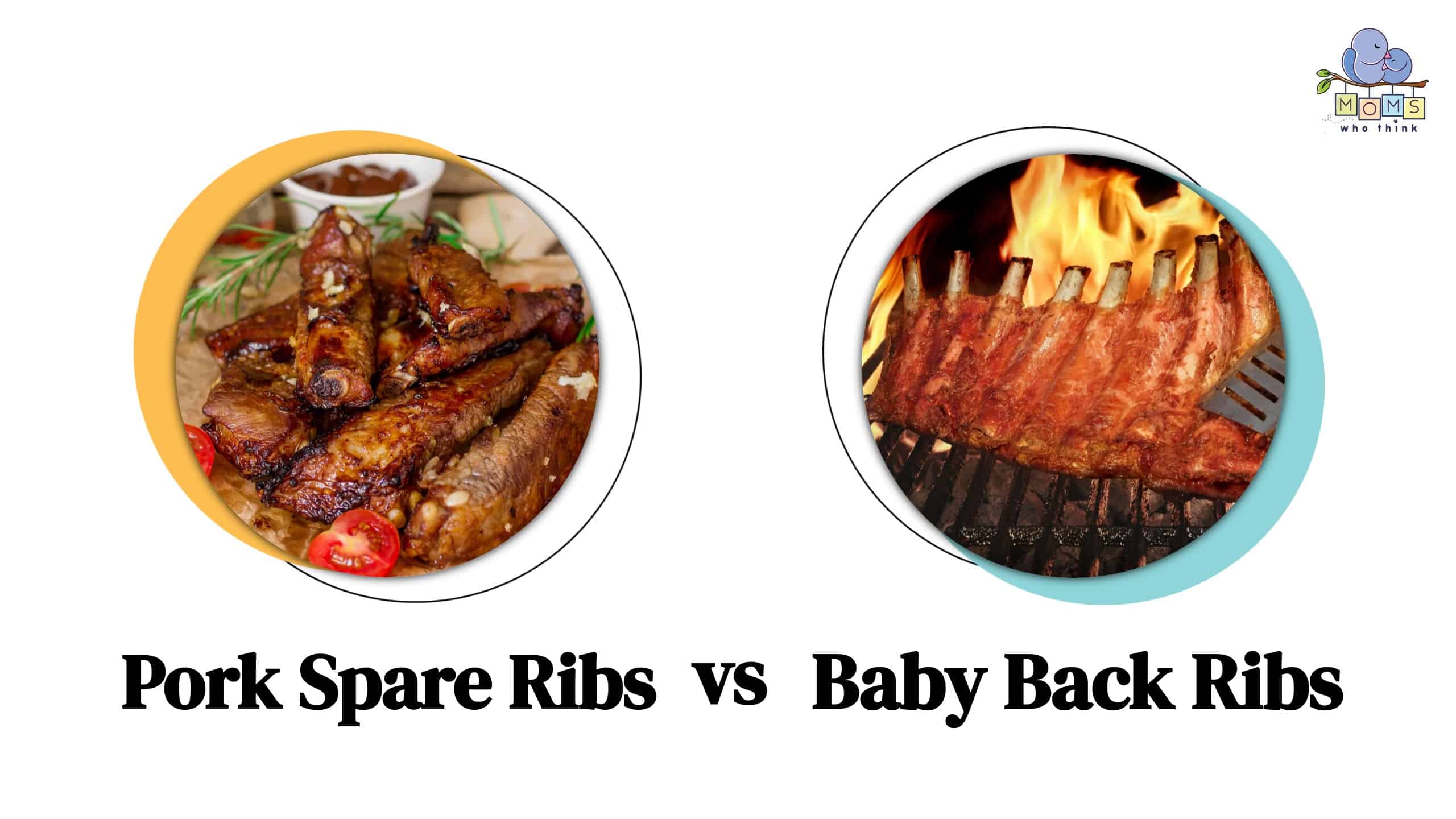Pig meat is one delicious dish for many cuisines. From the ribs to the sausages, it's something most people indulge in on different occasions. Pork spare ribs, especially, are incredibly wonderful in taste and cooking versatility. Among the several pig rib types are the baby back ribs. Now, people hardly know how to distinguish the two, and this article provides meaningful insight into them.
Baby back ribs are pork ribs, but not all pork ribs are baby back ribs. Pork ribs are any cut of pork from a domestic pig's ribcage. Baby back ribs are pork ribs from the upper rib cage just below the loin muscle.
In this article, we’ll look at pork spare ribs and baby back ribs and how different they are despite coming from the same animal, their nutritional value, and their health benefits, among others. Let's expound on them below.
Pork Spare Ribs vs. Baby Back Ribs: How Do They Compare?
For all pork lovers, pork ribs are a heavenly treat. As mentioned above, the ribs come in different varieties depending on the rib cage section they are cut from. Aside from baby back ribs, others include pork spare ribs, St. Louis cut ribs, and country-style ribs. They differ in meat and bone thickness and fat content.
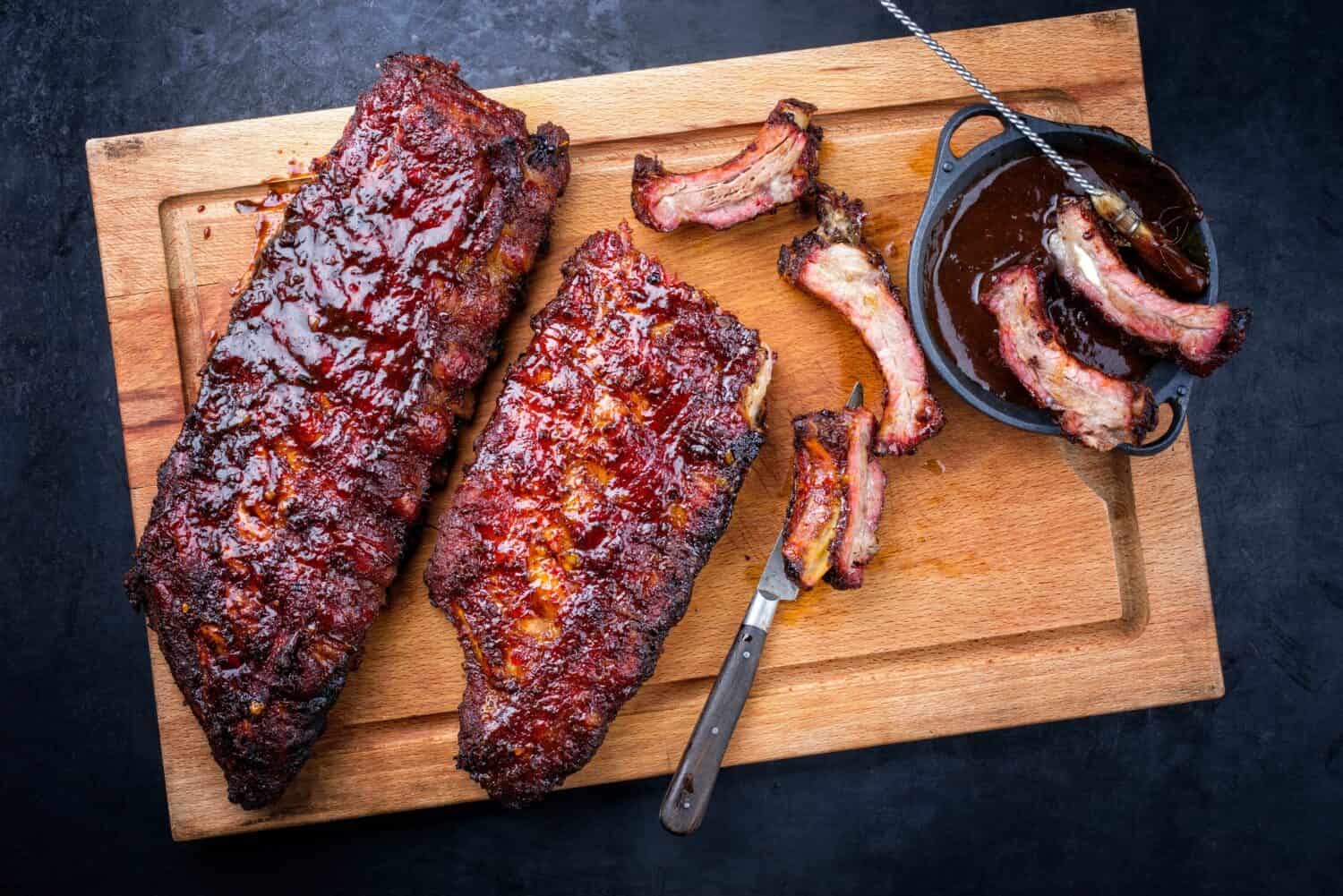
©hlphoto/Shutterstock.com
Generally, pork ribs are messy, fatty, and hard. At this point, you may question your reason for buying them and whether they are still the tender and delicious pieces you've heard about. Not to worry because these ribs become soft, tender, and succulent upon cooking, and the fat also breaks down, enhancing the flavor. Baby back ribs are specifically lean, meaty, and tender. They are the leanest pork ribs out of all of them.
Pork ribs come in different sizes since they are cut from varying parts of the rib cage. On the other hand, baby back ribs are the shortest, which is the reason behind the name ‘baby.' Usually, they are approximately 6 inches on the longest end and 3 inches on the shorter side.
The flavor of pig ribs isn't as intense. They have a mild taste, which you can enhance using spices or sauces or leave as is, depending on your desired taste. The fat somehow elevates the flavor, but varied seasoning is the best option for lean baby back ribs.
Nutritional Value of Pork Spare Ribs vs. Baby Back Ribs
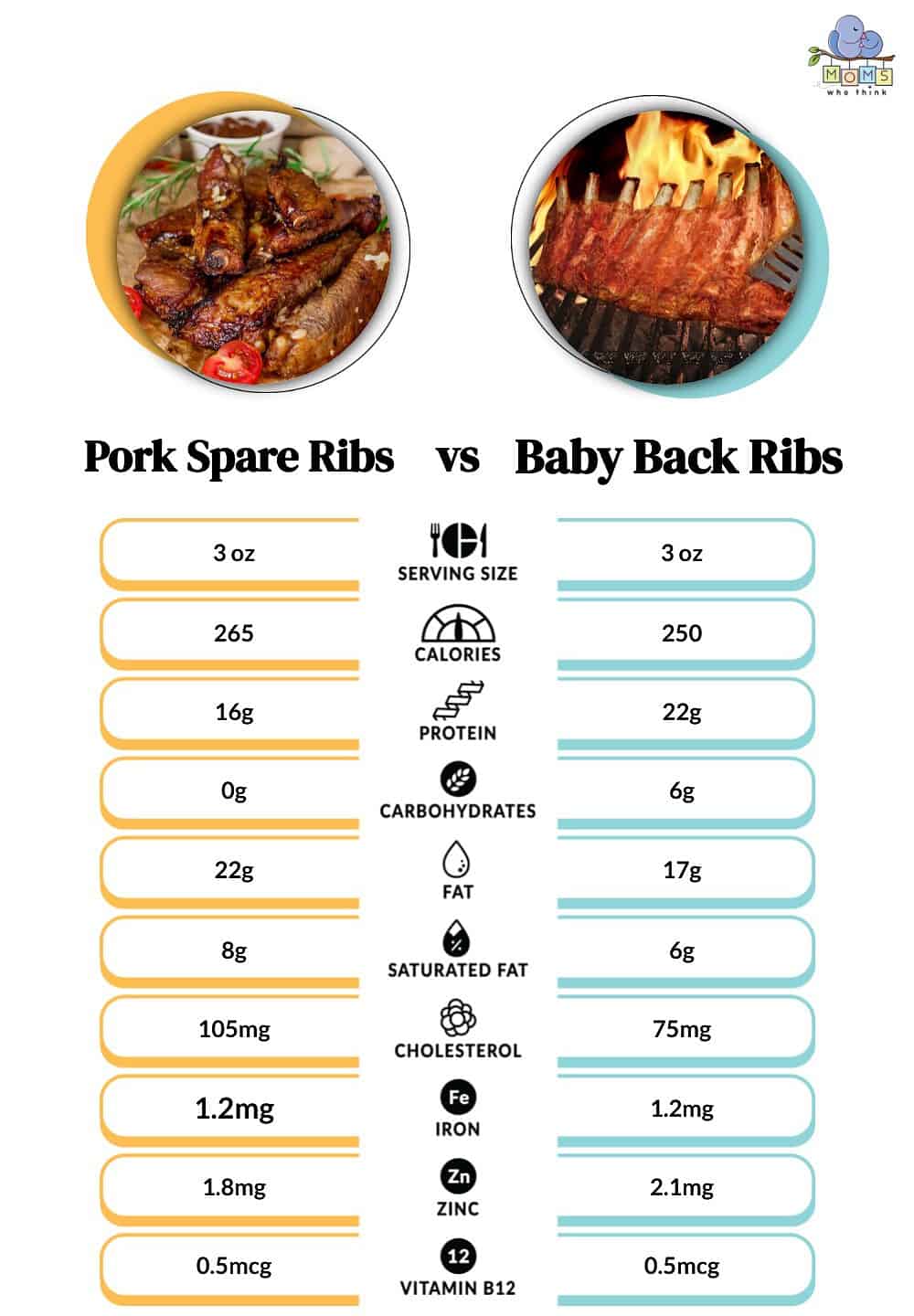
©
Pork ribs aren't as healthy as you'd expect, but some individuals would disagree when referring to baby back ribs. Despite being a treat with several drawbacks, they have a collection of nutrients that benefit the body, such as proteins, minerals, and vitamins.
The only calories in pork ribs come from their fat and protein amounts. It means that baby back ribs have fewer calories than other pig ribs due to their reduced fat content. All pork ribs are a good source of protein, which helps fuel your muscles and rebuild tissue within the muscle. The fat in pork ribs is both saturated and unsaturated. Every 3 oz serving of pork spare ribs has about 8 grams of saturated fat, while baby back ribs contain 6 grams of that fat.
The ribs contain 5 grams of unhealthy saturated fat. That level is too high for each serving and adds terrible cholesterol to your blood. For this reason, pork ribs should be an occasional meal, or go for back ribs or baby back ribs, which still have fat but in lesser amounts, are leaner and thus healthier for you.
If you’re looking for a good amount of minerals, go for pork ribs. They offer significant levels of zinc and iron, contributing to your immunity. Iron helps increase blood volume and supplies the cells and tissues with enough oxygen. A rib serving provides almost 50 percent of your daily zinc needs and about 15 percent of iron needed by the body.
Some of the vitamins present in pig ribs are Vitamin D and B12. Of course, they have other vitamins, but the listed ones are vital. Vitamin D is necessary for calcium absorption, hence solid teeth and bones. The nervous system, a crucial body part, must be healthy. Vitamin B12 is in charge of this and also provides the tissues with adequate oxygen to keep the metabolism of the cells active. You get about 7% of vitamin D per serving. Quite frankly, it's relatively low compared to what the body requires daily, but it's still substantial.
What are Pork Spare Ribs?
Pork spare ribs are cuts from a domesticated pig's ribcage. The ribs are a combination of meat and bones cut into pieces depending on the kind of ribs they are. These ribs are generally fatty and meaty with a tame or mild taste. That unforgettable flavor is usually due to the spice rub or sauce used during preparation.
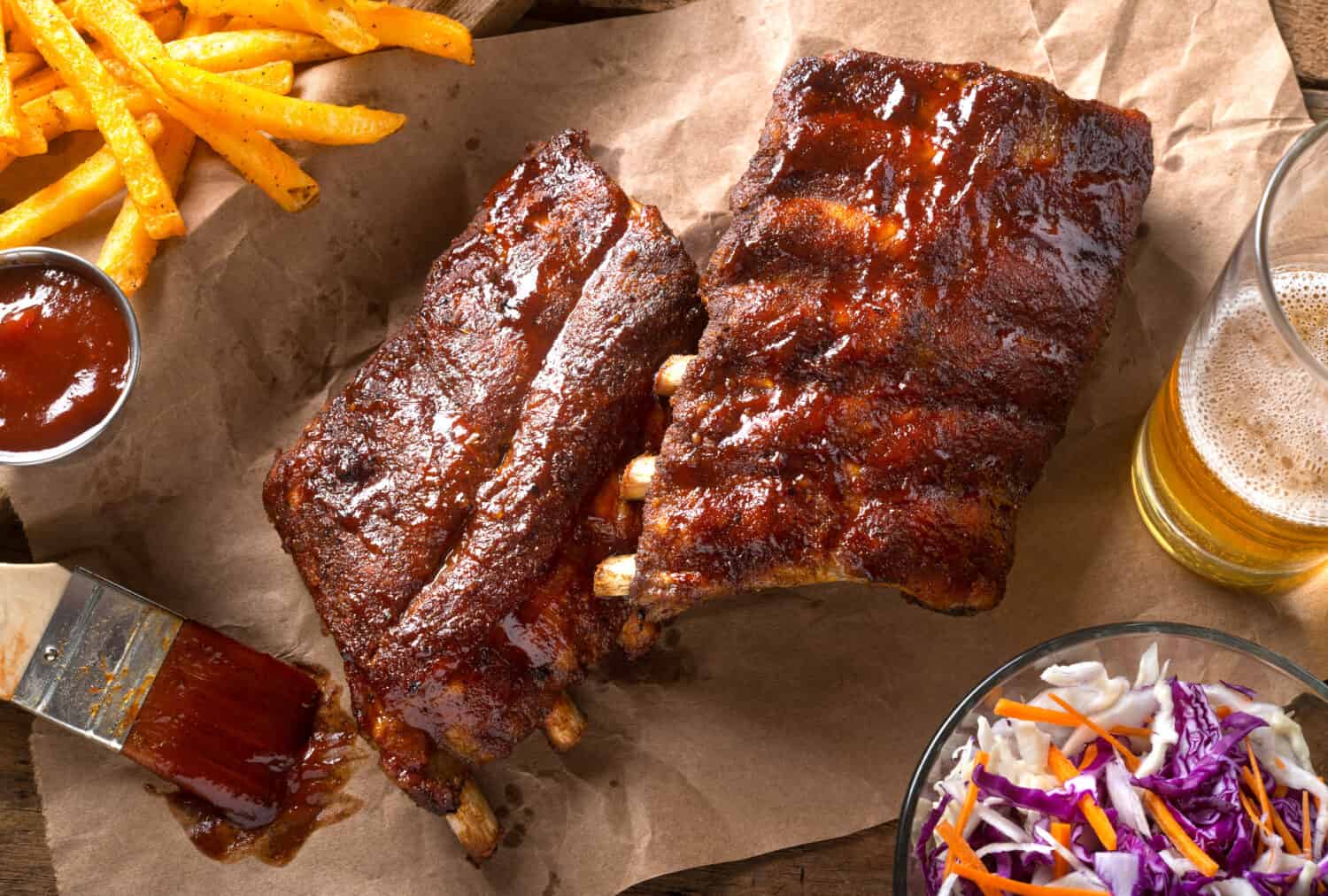
©Foodio/Shutterstock.com
There are four categories of pork ribs, so you must be specific when buying. You'll find baby back ribs from the back and around the pig's loin. Then there are pork spare ribs cut from the belly, on the lower section of the ribcage. The third type is St. Louis-style ribs. These are spare ribs without the sternum, brisket bones, and meat flap hanging on the last rib. Finally, we have the country-style ribs cut from the shoulder towards the end of the loin. All four types have unique characteristics that distinguish them from each other, even though they are all pork meat.
What are Baby Back Ribs?
Baby back ribs, also known as loin ribs, are some of the most delicious pork ribs you can have. They are referred to as ‘baby back' because they are cuts from the back, on the upper part of the spinal area. Also, they are generally smaller than other ribs cut from the pig's back. Pork ribs can be from a mature or younger hog. However, most baby back ribs come from the latter. They have a slight curve that matches the loin's curvature and are lean, tender, and have more meat.
Pork Ribs vs. Baby Baby Back Ribs: How to Cook Them
Baby back ribs are typically pork ribs, so cooking isn't any different. Pork ribs are best when slowly cooked over low heat. You can grill, bake, or smoke as per your recipe. Grilling is the most preferred way to cook ribs, but maintaining low heat on the grill can be challenging. Nevertheless, if you keep the fire right, the meat comes out tender, moist and juicy. During cooking, the fat melts and coats the muscle fibers and connective tissue surrounding the flesh, and the meat falls off the bone.
Back or loin ribs have a hard membrane on the inside part of the rack. Even though the meat becomes tender upon cooking, this membrane doesn't change. It stays tough and rubbery, giving the ribs an unpleasant feel. Avoid this by peeling it off. Use a knife to lift one side, then peel while holding using a paper towel to prevent slipping.
The mild pork flavor allows you to season the ribs to your liking. Section the rib rack into servable portions, either one, two, or three, depending on the size of the bone. You can dry rub or marinade to add flavor. For the dry rub, sprinkle every rib with spices or herbs and rub them with your fingers. Cover and refrigerate the meat for 24 hours or less, then cook accordingly. Alternatively, add your preferred marinade to a bag and place the ribs inside to marinate. Seal the bag and put it in the fridge for up to 24 hours, then cook them.
How To Tell When The Pork Ribs Are Done Cooking
If you cook pork ribs a lot, it's easy to tell when they are done. But first-time cooks may have difficulty doing that and overcook the ribs. Here are cues to help in identification.
Toothpick Test
Good pork ribs are quite tender. If the toothpick easily goes through the meat, chances are it's done.
Bone Tips
Exposed bone tips mean the ribs are almost done because the meat starts to retract.
The Rib Twist
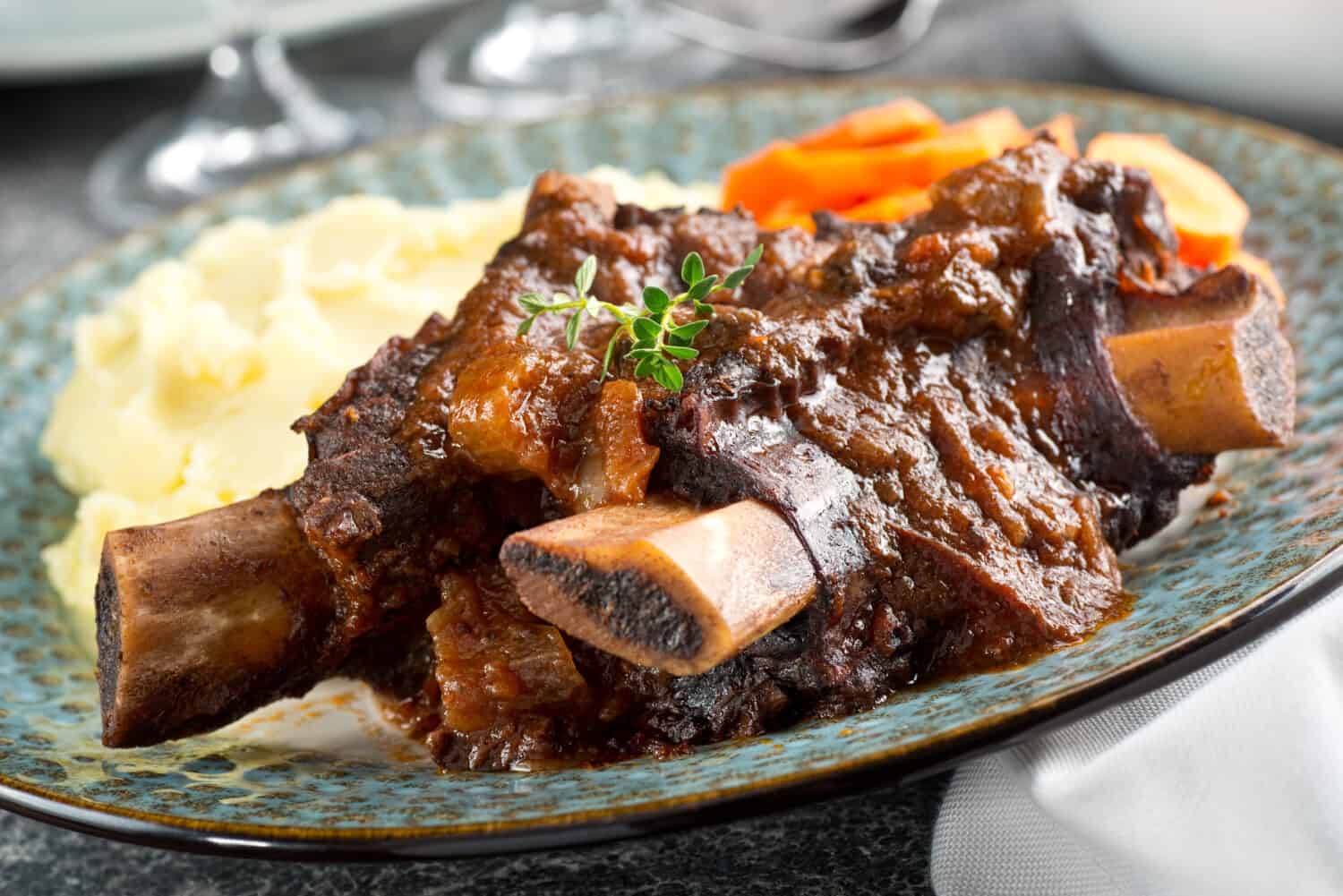
©Foodio/Shutterstock.com
A rib that's well done easily turns when twisted. Use tongs to grab a bone and slightly twist.
The U-shape
Holding the ribs up to turn them or checking if they are cooked is normal. Well-cooked ribs sag in the middle to form a U-shape. The meat in that section may seem cracked, too.
Can You Swap Baby Back Ribs for Other Pork Ribs?
Yes, you can. You can interchange all kinds of pork ribs with each other as they have similar textures and flavors. Unless you want something lean, fat, or meaty, go for ribs with those specifications.
Conclusion
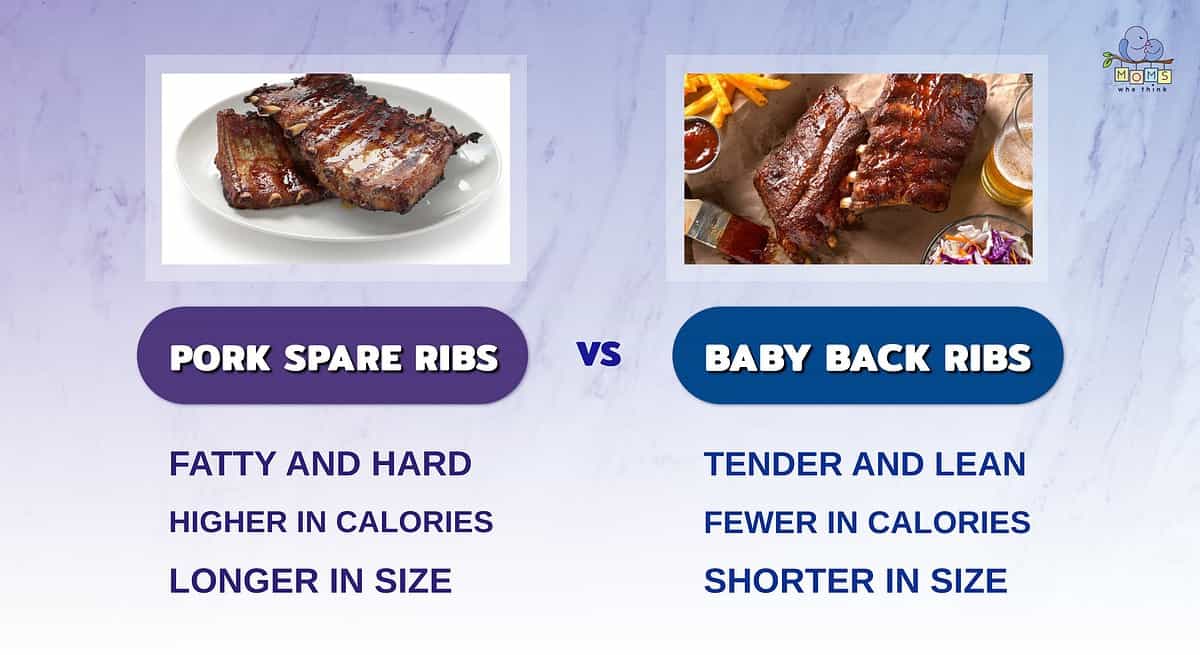
It is easy to tell why pork ribs are a favorite type of meat among many. It's a tender, succulent, and delicious cut of meat. Baby back ribs are famous pork ribs you may want to try. They are lean, more meaty than most rib cuts, and more minor. Overall, pork ribs are easy to cook through grilling, smoking, baking, or using a slow cooker. Depending on how you prepare them, they have a punch of flavor; you can never go wrong with this choice.
Not all ribs are created equal, especially when comparing pork spare ribs and baby back ribs. Let's take a look at how these two differ:
- Baby back ribs are typically leaner and more tender than pork spare ribs.
- Pork spare ribs are larger in size, whereas baby back ribs are smaller in size.
- Because the meat is leaner, baby back ribs are lower in calories than pork spare ribs.
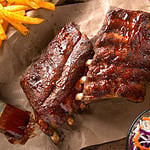
Honey Glazed Baby Back Ribs
Ingredients
2 pounds baby back spare ribs
1 can condensed beef broth
1/2 cup water
3 Tablespoons maple syrup
3 Tablespoons honey
2 Tablespoons soy sauce
2 Tablespoons barbecue sauce
1/2 teaspoon dry mustard
Instructions
1. Bake ribs at 350°F for 1 hour (1/2 hour per side) or broil for 15 to 20 minutes to remove fat.
2. Cut into single servings.
3. Combine all other ingredients in crock pot, stir until sauce is smooth. Add ribs.
4. Cover and cook overnight or on low for 8 hours.
